Compiling six of the best in Pontevedra wasn’t easy. There are no real standout attractions as such. And yet the old town is an enchantress. We didn’t know Pontevedra until we strolled in on weary feet when walking the Portuguese Camino de Santiago. A Catalan colleague and friend we worked with putting together a less well-known stretch of the famous Camino was the same. And after visiting, we all raved about the town as being a highlight.
The story goes that Pontevedra was founded by the archer Teucer, a hero of the Trojan War. There’s not a great amount of evidence to back this up, but the origins story stuck, and now people from Pontevedra are called Teucrinos.
It was a thriving port for many years, famed for its fish curing and salt production and, by the 16th century, was one of the most populated of Galicia’s cities. Like many towns and cities that existed on ancient trading routes, it faded from the spotlight as the centuries rolled by, even though it remains a popular place to pause on the pilgrimage to Santiago de Compostela. Now it rewards visitors with a beguiling blend of historic streets which buzz with a youthful ambience.
Six of the best of Pontevedra
The Main Attraction – Church of the Virgin Pilgrim
The Iglesia de la Virgen Peregrina is an essential stop for any pilgrim passing through Pontevedra. Constructed in 1778, it’s a shrine to those following the way of St James. Even the floor plan is designed to mirror the shape of a scallop shell. Shellfish are a bit of a theme throughout the church, there’s also a mollusc-shaped fountain. You don’t have to be a pilgrim to appreciate this impressive example of religious architecture, combing both Baroque and Neoclassical features, which welcomes visitors to the streets of the old quarter. Although entrance is free, for €1 you can climb to the church’s dome.
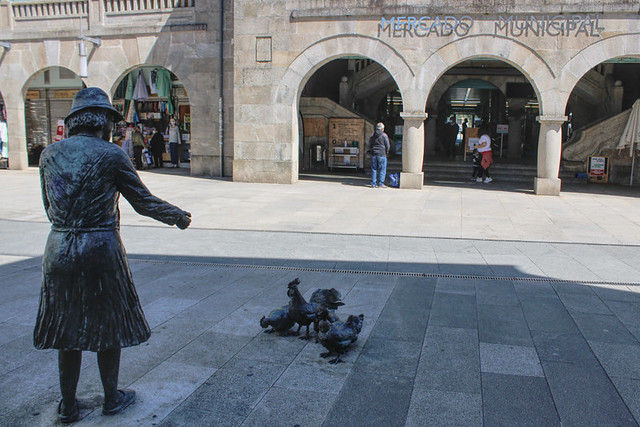
Blast from the past – Mercado de Abastos
Markets can be like a living link to the past. The way trade is conducted in older ones feels as though it hasn’t changed much in centuries. And so it is with Pontevedra’s bustling Mercado de Abastos, which is open from early morning till 15:00 daily except for Sunday. It has all the usual products you’d expect from a Spanish market – cheeses, hams, chorizos, vociferous shoppers – but being close the coast, the fish and seafood are especially good. The first floor is a designated gastronomic area; a great place to enjoy local goodies while soaking up the atmosphere and aromas of the market below.

A Serene scene – The Jardines de Casto Sampedro
The Jardines de Casto Sampedro are one of the few green spaces within the old town and are known for being the location of the fountain which symbolises Pontevedra’s hospitable nature as it traditionally provided fresh drinking water for pilgrims. For a truly tranquil spot cross the Ponte do Burgo and follow the river east to reach the Illa das Esculturas, Galicia’s largest open air art museum, where over 10 sculptures blend in, sort of, with the island’s natural elements. Basically, it’s a big park with lots of works of art.
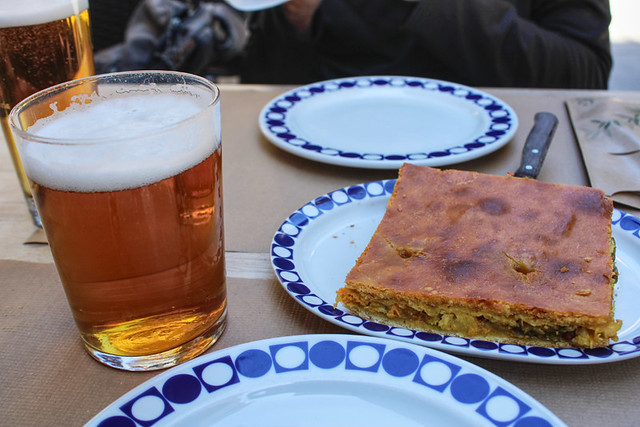
A taste of – empanadas
Although empanadas (pies with a savoury filling) are a speciality throughout Galicia, they are especially popular in the tascas and taverns of Pontevedra. Empanadas have been the street food of pilgrims since the 12th century. It’s even said there’s a pilgrim eating one carved into the Santiago de Compostela’s Pórtico de la Gloria, but we haven’t tracked him down yet. Before visiting Galicia, we were used to Spanish empanadas being filled with mostly tuna and tomato. Here, you can find octopus, scallops, cockles, cuttlefish, chorizo, chicken and mushrooms, cod and raisins, and a lot more. The one on the picture was at Tapería La Estafeta near the Parador de Pontevedra.
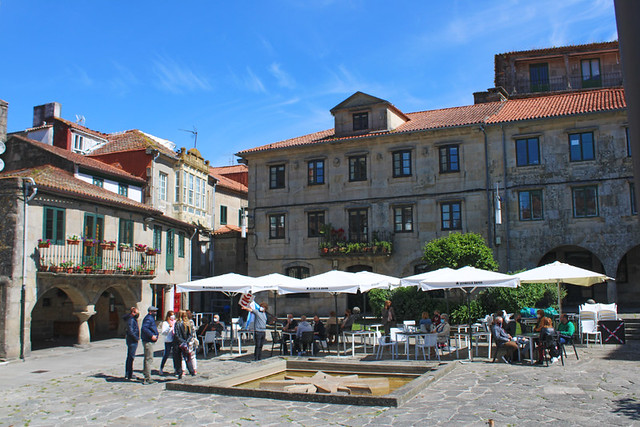
Away from the crowds – Casa das Campas
Pontevedra’s great charm lies in the maze of streets that make up its historic quarter. The network of narrow lanes is a labyrinth full of little interesting snippets to devour – old fountains, intriguing sculptures, discreet plazas, buildings with fascinating pasts. One of these is Casa de Campas, once home to Benito de Soto, considered the last great pirate by some, and a murderous psychopath by others. Legend has it there is treasure stashed away in the old house. There are plenty of atmospheric bars nearby to sit with a drink and ponder where the old sea goat might have hidden it.
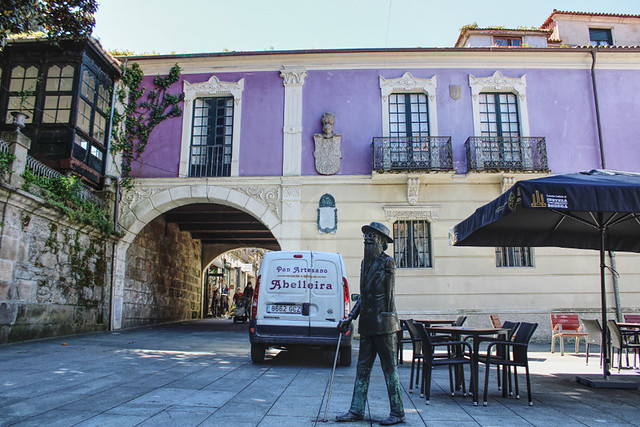
The quirk – the parrot Ravachol
The annoying thing about the sculpture of the parrot Ravachol is I didn’t take a photo of him. I thought the sculpture was something to do with the bank (formerly a pharmacy) it’s located outside on Rúa Michelena. It was only after we left that I discovered Ravachol was a parrot extraordinaire. Not only did he squawk loudly when anyone tried to steal from the pharmacy that was his home, he was also an enthusiastic participant in the intellectual soirees his owner regularly held there. Ravachol was so beloved by Teucrinos, his symbolic burial is now an integral part of the city’s carnival celebrations.
Summary
Pontevedra doesn’t really have any attributes that makes it sexy enough to draw anyone seeking iconic Instagram material. It is simply an extremely pleasing place to spend time in, to wander slowly, pausing at pavement cafes and bars, and taking an eternity over lunches in picturesque plazas. Maybe that’s what makes Pontevedra so appealing. In a world where some travellers treat notching up destinations like it’s just a numbers game, Pontevedra’s pilgrim personality slows the pace right down, allowing you to appreciate qualities you might otherwise miss.

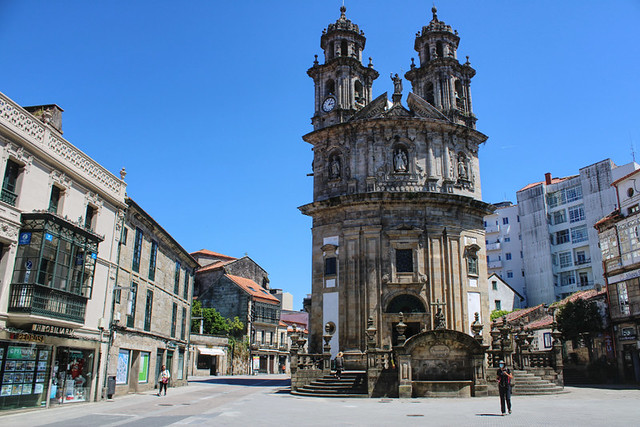



Be the first to comment